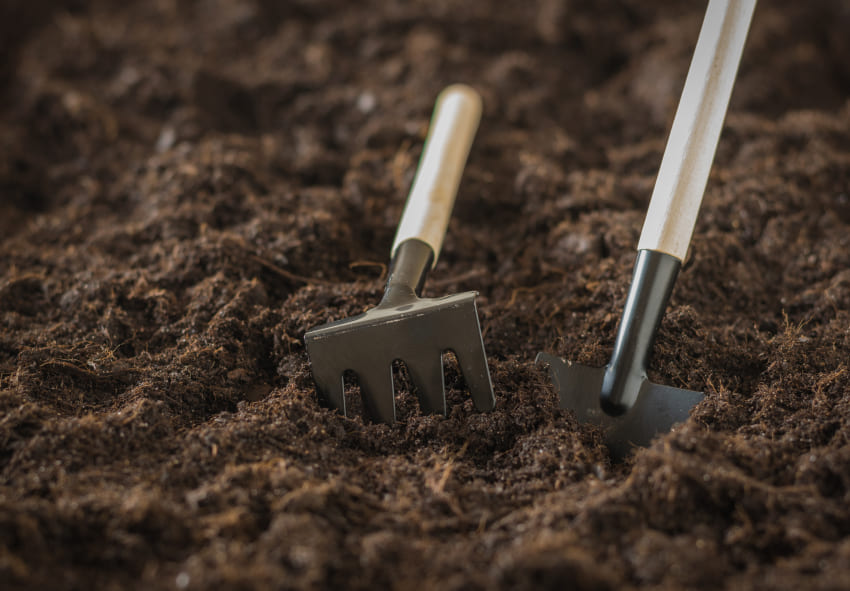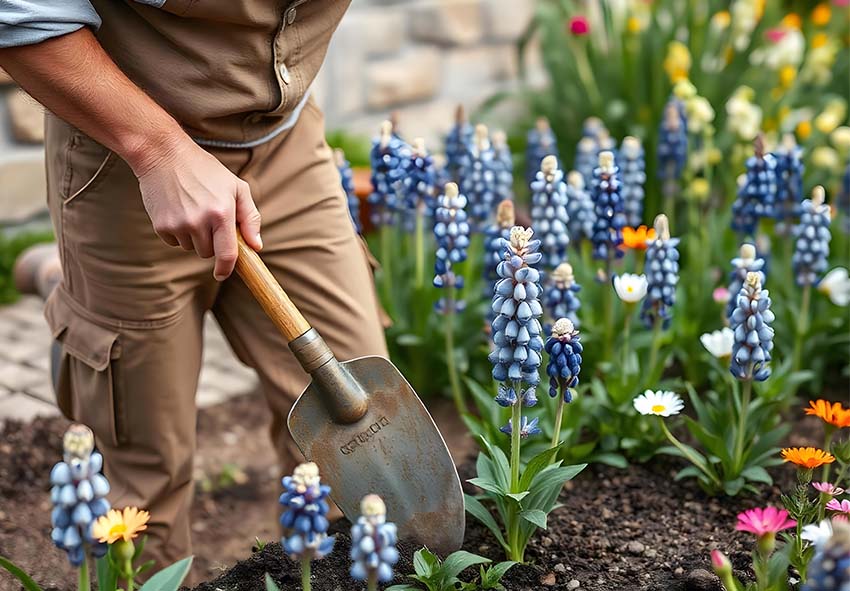Lupines are beloved for their tall, vibrant flower spikes and ability to thrive in a variety of garden settings. Whether you want to enhance a cottage garden or support pollinators, lupines are a beautiful and beneficial addition. In this guide, we’ll walk you through everything you need to know about the planting process — from seed prep to spacing and watering tips. Our gardening blog is a perfect place to find all the information you need!
Choosing the Right Type of Lupinus to Plant

Selecting the right type of lupine is the first step toward planting success. Lupinus comes in both annual and perennial varieties, and each has its advantages depending on your garden goals.
Seeds vs. Seedlings
You can start lupines from seed or plant nursery-grown seedlings. Seeds are cost-effective and offer a broader selection of varieties, but they require preparation for good germination. Seedlings are easier for beginners and provide quicker results in the garden.
Annual vs. Perennial Varieties
Annual lupines grow quickly and bloom in the first season, while perennial varieties return year after year. Lupinus polyphyllus is a popular perennial, ideal for colder climates, while Lupinus hartwegii is a colorful annual well-suited for quick seasonal displays.
Popular Species to Consider
When choosing lupines for your garden, it helps to know which species thrive in your climate and suit your design goals. Here are some of the most popular lupinus species loved by gardeners:
- Lupinus polyphyllus (Garden Lupine): A hardy perennial known for its tall spikes and wide range of colors. Ideal for temperate climates and a favorite in cottage-style gardens.
- Lupinus perennis (Sundial Lupine): Native to eastern North America, this perennial is smaller but great for supporting pollinators, especially endangered butterflies like the Karner Blue.
- Lupinus texensis (Texas Bluebonnet): An iconic annual lupine native to Texas, featuring bright blue flowers with a white tip. Best for warm climates and wildflower meadows.
- Lupinus arboreus (Tree Lupine): A fast-growing, shrub-like perennial with yellow blooms. Thrives in coastal and sandy soils, often used for erosion control.
- Lupinus hartwegii (Hartweg’s Lupine): A colorful annual species from Mexico, often found in seed mixes. Great for quick color in borders and containers.
When to Plant Lupines
Timing is crucial when planting lupines, especially if you’re starting from seed. The right planting window ensures better germination and stronger early growth.
Best Time of Year for Planting
Plant lupine seeds outdoors in early spring after the last frost or in early fall, particularly in milder climates. If you’re using seedlings, transplant them in spring when the soil has warmed up slightly. In USDA zones 3–7, spring is generally ideal.
Understanding Germination Timelines
Lupine seeds typically germinate in 14 to 21 days under optimal conditions. Cooler soil can delay this process, while well-prepared and treated seeds tend to sprout more reliably. Be patient, as some species take a little longer to emerge.
Preparing for Planting

Proper preparation sets the stage for healthy, thriving plants. Choose a good spot, prepare your soil, and treat your seeds for best results.
Site Selection
Choosing the right location is essential for planting lupines successfully. Here are key factors to consider when selecting the ideal spot in your garden:
- Full Sun Exposure: Lupines thrive in locations that receive at least 6 hours of direct sunlight per day. More sun encourages strong stems and vibrant blooms.
- Well-Drained Soil: Avoid soggy or compacted soil, as lupines are prone to root rot in overly wet conditions. Slightly sandy or loamy soil is ideal.
- Sheltered from Strong Winds: While lupines are hardy, tall flower spikes can be damaged by harsh wind. Choose a location that offers some natural protection.
- Slightly Acidic to Neutral pH: A soil pH of 6.0–7.0 is best. You can amend soil slightly if it’s too alkaline to better support lupine growth.
- Low Competition from Aggressive Plants: Avoid planting near aggressive groundcovers or fast-spreading perennials that might crowd out young lupine plants.
Soil Preparation for Lupines
Lupines prefer well-draining soil with a slightly acidic to neutral pH (6.0 to 7.0). Avoid heavy clay soils unless amended with compost or sand. Loosen the top 12 inches of soil to help young roots establish easily.
How to Treat Lupine Seeds Before Planting
Lupine seeds have a hard coating and benefit from scarification — scratching the surface gently with sandpaper — or soaking in warm water for 12–24 hours. These treatments help improve germination rates significantly, especially in tougher species.
Planting Lupinus Seeds or Seedlings
Now that everything is prepared, it’s time to plant your lupines. Whether you’re sowing seeds or planting transplants, following these steps helps ensure healthy establishment.
Planting Depth and Spacing
Sow seeds 1/8 to 1/4 inch deep and space them about 12–18 inches apart. For seedlings, dig a hole the size of the root ball and plant at the same depth. Adequate spacing prevents overcrowding and improves air circulation.
Watering After Planting
Water gently but thoroughly after planting to settle the soil around seeds or roots. Keep the soil consistently moist (but not soggy) during the first few weeks. Avoid overhead watering to minimize the risk of fungal issues.
Early Growth Tips and Troubleshooting

Once planted, caring for lupinus becomes essential to ensure healthy growth. Monitor their development closely and address any issues early on to support strong, vibrant blooms.
Protecting Young Seedlings
Use garden cloches, row covers, or lightweight mulch to protect seedlings from harsh weather or curious critters. Lupines are especially vulnerable to slugs and snails during early growth.
Common Early Planting Mistakes
Even experienced gardeners can make mistakes when planting lupines early in the season. Avoid these common pitfalls to give your plants the best start:
- Planting Too Early in Cold Soil: Lupine seeds need warm soil to germinate. Planting in cold, wet soil can lead to rot or delayed sprouting.
- Skipping Soil Preparation: Neglecting to loosen and enrich the soil can hinder root development. Lupines prefer well-drained, slightly acidic soil.
- Overwatering After Planting: Excess moisture can cause seedling rot. Keep the soil moist but never soggy, especially in cool weather.
- Not Scarifying Seeds: Lupine seeds have a hard coating and benefit from scarification. Failing to do this may result in poor germination rates.
- Ignoring Sunlight Requirements: Planting in too much shade can stunt growth. Choose a spot with full sun for strong stems and abundant blooms.
Conclusion
Planting lupines successfully begins with good timing, soil prep, and thoughtful care during the first few weeks. By following these planting tips, you’ll give your lupines the best chance to grow strong and vibrant. With their tall, colorful blooms and natural beauty, lupines will reward you with stunning displays for seasons to come!
Frequently Asked Questions (FAQs) about Planting Lupinus
1. When is the best time to plant Lupinus seeds?
The ideal time to plant Lupinus seeds is in early spring or fall. Spring planting allows seeds to germinate as the soil warms, while fall planting enables natural stratification. Ensure the last frost has passed before sowing outdoors to give seedlings the best start.
2. Can I order lupinus plants from your online store?
You can browse our online store Dutch-bulbs.com to explore the options, and with a few clicks, you can have lupinus plants delivered to your doorstep. Our selection includes different lupinus cultivars, each with its unique foliage and characteristics.
3. How deep should I plant Lupinus seeds or transplants?
Plant Lupinus seeds about 1/8 inch deep. If using transplants, place them at the same depth they were growing in their container. Be careful not to damage the taproot, as it’s sensitive and crucial for the plant’s development.
4. What kind of soil is best for planting Lupinus?
Lupines grow best in well-drained, slightly acidic to neutral soil (pH 6.0–7.0). Sandy or loamy textures are ideal. Avoid heavy clay or overly rich soil, as this can lead to root rot and weak growth. Good drainage is essential for healthy plants.
5. Can I plant Lupinus in containers?
Yes, but choose deep containers to accommodate their long taproots. Use well-draining soil and place the container in a sunny spot. Water regularly, but avoid overwatering. Container planting may limit the plant’s size, but it’s a good option for small spaces or balconies.
Published: 05.08.2025
